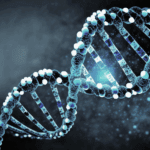When your heart sounds an alarm, every moment matters. Cardiac events occur when blood flow to the heart is obstructed, risking irreversible damage or fatality. While survival hinges on swift action, many hesitate due to uncertainty or fear. This guide unpacks how to identify warning signals, respond effectively, and prioritize prevention-all while navigating healthcare disparities.
Why Acting Quickly Matters
The heart muscle relies on a continuous supply of oxygen-rich blood. When an artery becomes blocked, the affected portion of the heart begins to suffer from oxygen deprivation. The longer this deprivation lasts, the more severe the damage becomes, sometimes leading to permanent loss of heart function or fatal arrhythmias. Early intervention – whether through clot – dissolving medications, angioplasty, or stent placement – can restore blood flow and save heart muscle. Hospitals equipped with advanced cardiac care units can perform these lifesaving procedures, but they require that patients arrive promptly after symptoms begin.
Medical professionals use diagnostic tools such as electrocardiograms (ECGs), blood tests for cardiac enzymes, and imaging to confirm a heart attack and determine its severity. The sooner treatment starts, the better the chances of survival and reducing complications like heart failure.
Read more: Having A Cat Is Linked To A Lower Risk Of Having Heart Attacks
Recognizing the Warning Signs of a Heart Attack
Heart attack symptoms can vary widely between individuals and often differ between men and women, as well as in people with underlying conditions such as diabetes. While the classic image of a heart attack involves sudden, severe chest pain, many experience more subtle or atypical symptoms that can easily be mistaken for less serious issues.
Common symptoms include:
- Chest discomfort or pain described as pressure, tightness, squeezing, or aching. This pain may last several minutes or come and go.
- Pain or discomfort radiating to the jaw, neck, shoulders, arms (especially the left), back, or upper abdomen.
- Shortness of breath, which may occur with or without chest discomfort.
- Cold sweats, nausea, vomiting, or lightheadedness.
- Unusual fatigue or weakness, sometimes described as feeling generally unwell.
Gender Differences in Symptoms
Women often experience heart attack symptoms differently than men. While chest pain is common in both sexes, women are more likely to report:
- Nausea or indigestion-like sensations.
- Unexplained fatigue or weakness.
- Dizziness or lightheadedness.
- Pain in the back, neck, jaw, or throat rather than the chest.
- Anxiety or a sense of impending doom.
Because these symptoms can be mistaken for less serious conditions such as acid reflux, the flu, or stress, women may delay seeking care, increasing the risk of severe heart damage or death.
Atypical Presentations and Special Populations
Some individuals, particularly those with diabetes, may have “silent” or atypical heart attacks with minimal or no chest pain. Instead, they might experience subtle signs such as:
- Mild discomfort or indigestion.
- Fatigue or shortness of breath.
- Lightheadedness or sweating.
This makes vigilance especially important for diabetics and others with nerve damage who may not sense typical pain signals.
Early Warning Signs Before a Heart Attack
Many heart attacks are preceded by warning signs hours, days, or even weeks in advance. These can include:
- Recurrent chest pain or pressure (angina) that occurs during exertion or stress and does not fully resolve with rest.
- Unexplained fatigue or shortness of breath.
- Episodes of dizziness or fainting.
Recognizing these early symptoms and seeking evaluation can allow for preventive treatment before a full heart attack occurs.
Read more: Subtle Signs of Heart Trouble You Should Never Ignore
Emergency Protocol: Five Lifesaving Moves
1. Dial Emergency Services Immediately
Seconds count. Studies show outcomes improve dramatically when care begins within the first hour. Even vague symptoms like unexplained dizziness justify a 911 call. Paramedics can initiate treatments en route, such as:
- ECG assessments to detect heart rhythm abnormalities.
- Early aspirin administration if appropriate.
2. Never Self-Transport
Driving during an episode risks accidents if consciousness fades. Ambulance crews stabilize patients and alert hospitals to prepare catheterization labs if needed.
3. Chew, Don’t Swallow, Aspirin
A 325mg dose (four baby aspirins) chewed – not swallowed – may inhibit clot formation. Exception: avoid if allergic or at high bleeding risk.
4. Navigate Healthcare Biases
Marginalized groups often face delayed care. A 2019 study revealed Black women over 50 received inadequate treatment 50% more often than white peers. Advocacy tips:
- Ask providers: “What’s your differential diagnosis?” to prompt thorough evaluation.
- Bring an ally to take notes and reinforce concerns.
5. Post-Crisis Prevention
- Weekly movement: 150+ minutes of brisk walking, dancing, or gardening.
- Diet tweaks: Omega-3-rich foods, leafy greens, and reduced processed sugars.
- Monitor metrics: Regular blood pressure and cholesterol checks.
Debunking Myths: Separating Fact from Fiction About Heart Attacks
Misconceptions about heart attacks are surprisingly common and can lead to dangerous delays in seeking care or adopting healthy habits. Let’s unravel some of the most persistent myths, backed by current medical understanding.
Myth 1: Heart attacks always cause severe chest pain.
Fact: While chest pain is a hallmark symptom, not all heart attacks present with dramatic, crushing pain. Some people-especially women-may experience subtle signs like discomfort in the jaw, back, neck, or arms, shortness of breath, nausea, lightheadedness, or even overwhelming fatigue. The discomfort can be mild or mistaken for indigestion or muscle strain. Recognizing these less obvious symptoms is crucial, as delayed treatment can worsen outcomes.
Myth 2: Only older adults or those with unhealthy lifestyles have heart attacks.
Fact: Age and lifestyle are important risk factors, but heart attacks can and do occur in younger people and those who appear healthy. Genetics, stress, and underlying medical conditions can all contribute. Even individuals with normal cholesterol and active lifestyles are not immune. Family history, congenital heart conditions, and environmental factors also play a role.
Myth 3: If you have a fast heart rate, it means you’re having a heart attack.
Fact: Heart rate can increase for many reasons, including stress, caffeine, or exercise. While a persistently high or irregular heart rate can signal a heart rhythm problem, it does not automatically mean a heart attack is occurring. If you notice an unusual or sustained change in your heart rhythm, consult a healthcare professional for evaluation.
Sudden cardiac arrest is the same as a heart attack.
Fact: These are distinct medical emergencies. A heart attack is caused by a blockage in the blood vessels supplying the heart muscle, while sudden cardiac arrest is typically an electrical malfunction that causes the heart to stop beating effectively. A heart attack can sometimes trigger cardiac arrest, but they are not interchangeable terms.
Read more: Doctor Cautions That Hearing Your Heartbeat While Laying Down Could Signal A ‘Concerning’ Health Condition
Build a Cardiac-Ready Environment
- CPR literacy: Free training via local health organizations boosts community survival rates.
- Emergency kits: Include aspirin, medical history summaries, and ICE (In Case of Emergency) contacts.
- Workplace drills: Designate staff trained in AED use and crisis response.
The Road Ahead: Systemic and Personal Change
While individual preparedness saves lives, systemic healthcare gaps persist. Supporting policies that fund equitable care and implicit bias training remains critical. On a personal level, embracing preventive habits-like substituting sugary snacks with antioxidant-rich berries-creates lasting heart resilience.
“Your heart’s whispers today could prevent its screams tomorrow,” reminds a preventive cardiology specialist. Proactive care, coupled with informed advocacy, transforms survival odds from grim to hopeful.
Cardiac emergencies don’t discriminate by age or fitness level. Recognizing subtle signs and acting decisively bridges the gap between crisis and recovery. Stay curious, stay prepared, and remember: in heart health, complacency is the real adversary.










